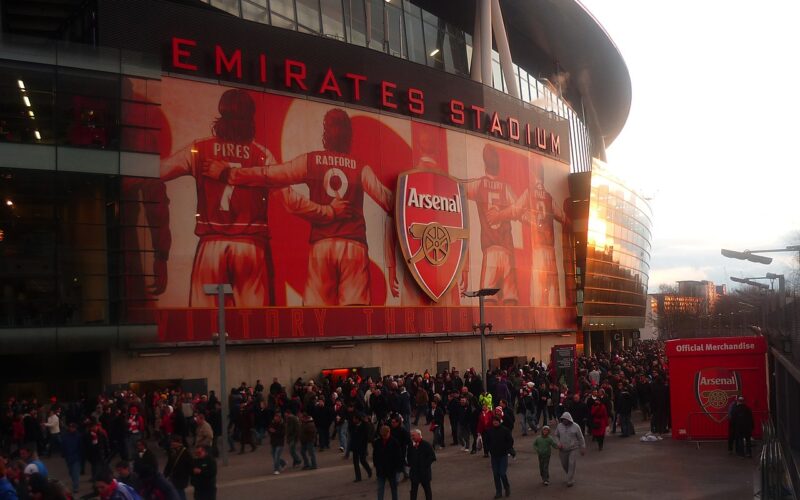Arsenal have had to withdraw their new home shirt from sale due to a design error by the kit’s manufacturer, Adidas.
The Gunners’ new shirt honours the ‘Invincibles’ season of 2003/04, when Arsene Wenger’s side went the entire Premier League campaign without losing a game. It reprints the outcome of each of the season’s 38 matches, with every win or draw being marked by a ‘W’ or ‘D’.
Sadly, the shirt only featured 32 of the results and so the ‘match day’ version (which is an exact replica of the ones worn by players, and retails for £110) is being redistributed with the error fixed. The ‘fan’ shirt, which is very close to the ‘match day’ replica but retails for the more affordable price of £80, is unaffected.
“The 2023-24 Arsenal home authentic jerseys are temporarily unavailable while a design error is being corrected,” Adidas said. “We are working closely with the club and our partners to ensure restocked jerseys are available as soon as possible, and are offering full refunds to fans who have already bought one.
“This design error falls short of the standards we set ourselves as a brand, and we apologise to the club and its fans.”
When football kits go wrong
This is by no means the only time a shirt design has caused problems for its manufacturer, or even for its team. Manchester United fans will no doubt remember the infamous grey away shirt from the 1995/96 season.
Worn just five times, it was seen for the last time in April 1996 when Sir Alex Ferguson demanded the players change to their blue-and-white ‘third kit’ at half-time with his team 3-0 down to Southampton. The legendary manager claimed the kit blurred into the crowd and his players were struggling to see one another.
Sadly for Sir Alex, the change didn’t have the desired change in fortunes: United lost 3-1, with Ryan Giggs grabbing a solitary consolation goal in the 89th minute.
In Spain, Athletic Bilbao asked Basque artist Dario Urzay to create a special edition shirt that would only be worn during the team’s 2004/05 UEFA Cup campaign. Urzay returned with a unique approach that featured blotches of red against a pure white background.
It was apparently inspired by splatters of blood, but after being worn in one friendly it received such sharp criticism from fans that it was quickly scrapped and never seen again.
Finally, on the international scene, an intervention from Argentina Football Association president Julio Grondona created headaches for Adidas in the build-up to the 1994 World Cup.
The brand developed a slightly different take on the classic light blue and white striped pattern by adding a thin black line between the colours.
The shirt was produced and already on sale by the time Grondona insisted that production be halted. The blue and white is a traditional pattern, he argued, and even the small touch of black was too much of an affront to the country’s proud heritage.
The shirt was pulled and though fans were seen in stadiums wearing the black version during the World Cup, the players themselves were in their normal colours.
Written and distributed by Chat T Sports.










